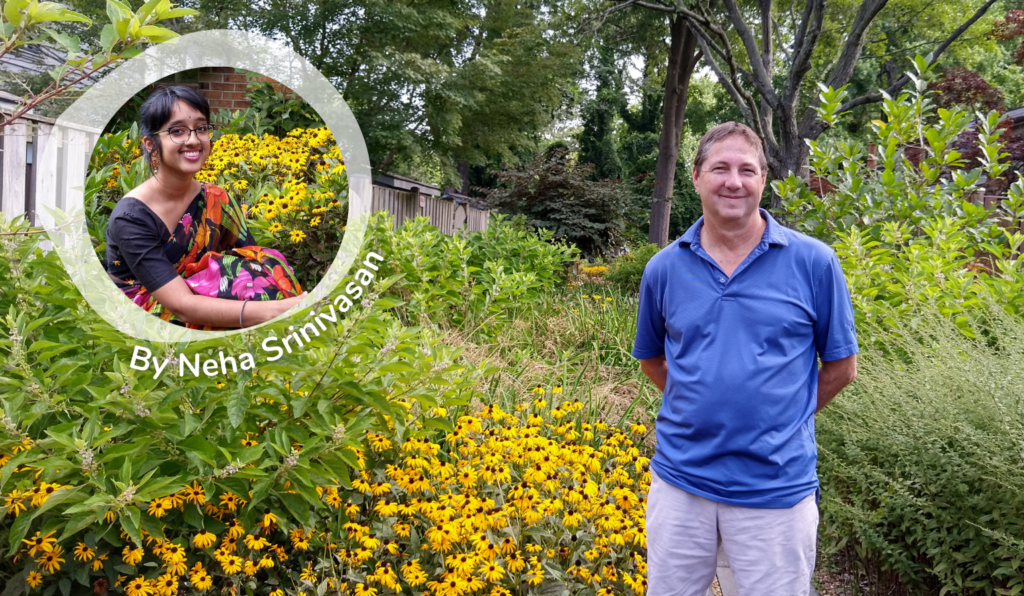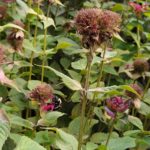 On a sunny day in late July, Vernon Hustead and I wrapped up a meeting at the Key School, with whom we are currently working on a design for a new Sacred Place, and I followed him to Cedar Ridge Court in Annapolis, where he was excited to show me a design he had just revisited.
On a sunny day in late July, Vernon Hustead and I wrapped up a meeting at the Key School, with whom we are currently working on a design for a new Sacred Place, and I followed him to Cedar Ridge Court in Annapolis, where he was excited to show me a design he had just revisited.
Vernon is one of Nature Sacred’s longest-serving Design Advisors (DA), a Design Advisory Committee member, and DA for multiple Sacred Places, including the ones at BLISS Meadows and at the Maryland Correctional Institution—Jessup. He is also deeply committed to sustainable landscape design and has a passion for stormwater management—which means that he is also my go-to co-conspirator and resource when I want to find ways to level up the ecological impacts of Sacred Places. Always at the ready with a wry quip or an encouraging comment, Vernon has a gift for engaging people in conversation, and approaching each of these interactions with the purpose of listening. And as a result, it is a truth universally acknowledged that Vernon Hustead knows every landscape architect in the state of Maryland (and probably quite a few others besides). He credits his grandmother with instilling this mindset: “When we were kids,” he said one day while at our office, “we would go over to my grandmother’s house. She thought it was really important for us to be engaged in our communities, and so she’d have us pick up trash on the beach or something, and while we did that we’d talk to people. Without that, I might still be pretty quiet.”
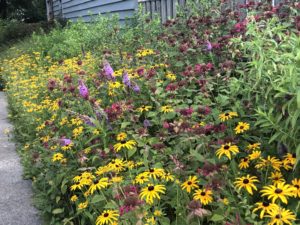 And that influence shows. His Sacred Place designs are deeply iterative, developed from the many questions he asks of our partners and the granularity of the options he presents during engagement sessions. They’re thoughtful, detailed and textured, and designed with a simplicity that allows the community’s desires and the native ecosystems to be front and center.
And that influence shows. His Sacred Place designs are deeply iterative, developed from the many questions he asks of our partners and the granularity of the options he presents during engagement sessions. They’re thoughtful, detailed and textured, and designed with a simplicity that allows the community’s desires and the native ecosystems to be front and center.
The Cedar Ridge garden is the interstice of two residential properties and before Vernon got involved, was just an empty lawn. Now, especially at this point in the summer, it was a profusion of native ferns, perennials, and shrubs, spanning more than a rainbow’s worth of color and spilling over merrily into the flagstone pathway that winds through this garden. As Vernon always does, he had designed the space to host as wide a diversity of native and naturalized plants as possible: beebalm, black-eyed Susans, and asters in the sunny interior entrance to the space; coral bells, Pennsylvania sedge, and ferns in the more shaded main garden; irises in the stormwater detention swale—and a whole palette of other plants besides. Against the straight lines and neutral colors of the nearby houses and paving, the amount of fun the plants were having spilling over each other was even easier to see. Meanwhile, a little bench set in the midpoint of the pathway invited passersby to pause and take it all in. Much of the design, Vernon pointed out, was made possible by one of the neighborhood’s residents, whose diligent maintenance allowed the plants to settle in, fill out, and flourish.
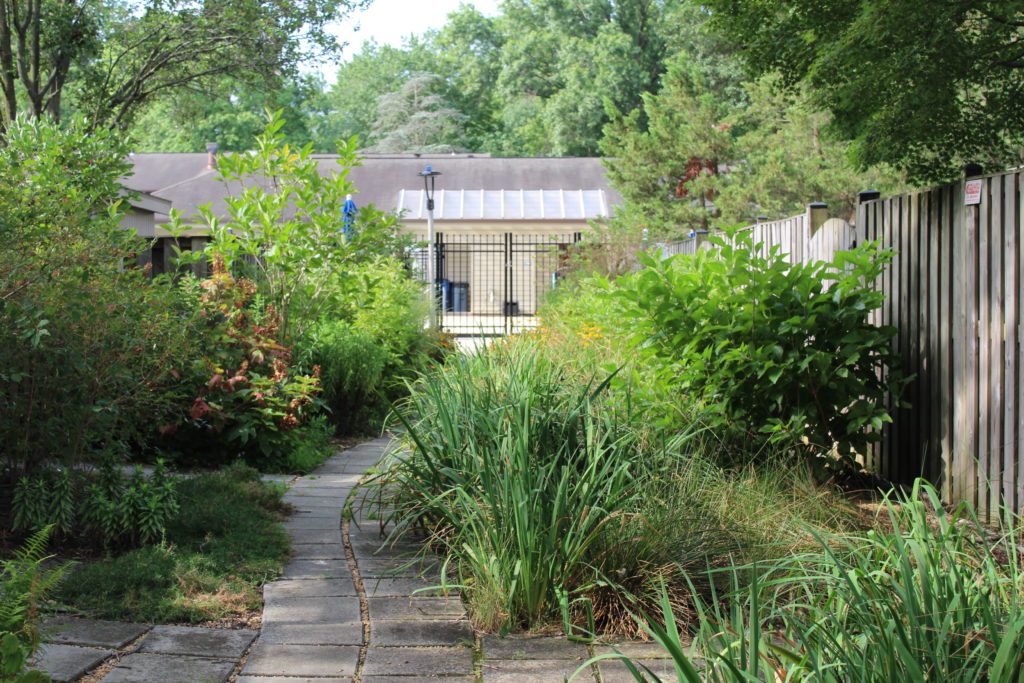 Native plantings can look weedy to folks accustomed to a more manicured style of garden, but Vernon’s approach to this garden is a great example of how to bridge this gap. I loved the massing of the black-eyed Susans and beebalm in front of the entrance, making larger clumps that present more unified blocks of color. Plants like coral bells, and irises have clear, defined shapes that make them seem neat and organized in a garden space. And using some ubiquitous garden denizens like oakleaf hydrangea helps bring a familiar element to the space.
Native plantings can look weedy to folks accustomed to a more manicured style of garden, but Vernon’s approach to this garden is a great example of how to bridge this gap. I loved the massing of the black-eyed Susans and beebalm in front of the entrance, making larger clumps that present more unified blocks of color. Plants like coral bells, and irises have clear, defined shapes that make them seem neat and organized in a garden space. And using some ubiquitous garden denizens like oakleaf hydrangea helps bring a familiar element to the space.
Why was Vernon so excited to show me this space? It was finally looking established and vibrant—and it took three years. Vernon often tells me that in the first year of a planting, the plants are just getting accustomed to their new locations. In the second year, they begin to establish and grow their root systems, underground where humans can’t see the changes. In the third year, they begin to grow aboveground. This refrain is common for landscape professionals. We have to remember that apart from our human stakeholders, we have two crucial sets of collaborators in our work: time and the plants we work with. The plants we choose need to get along with each other, with the soil, and with the sun; and they need time not just to adapt to new environments but to grow into the mature plants we envision when we design the space. Waiting is the hard part, as Vernon admits, but the result is worth it.
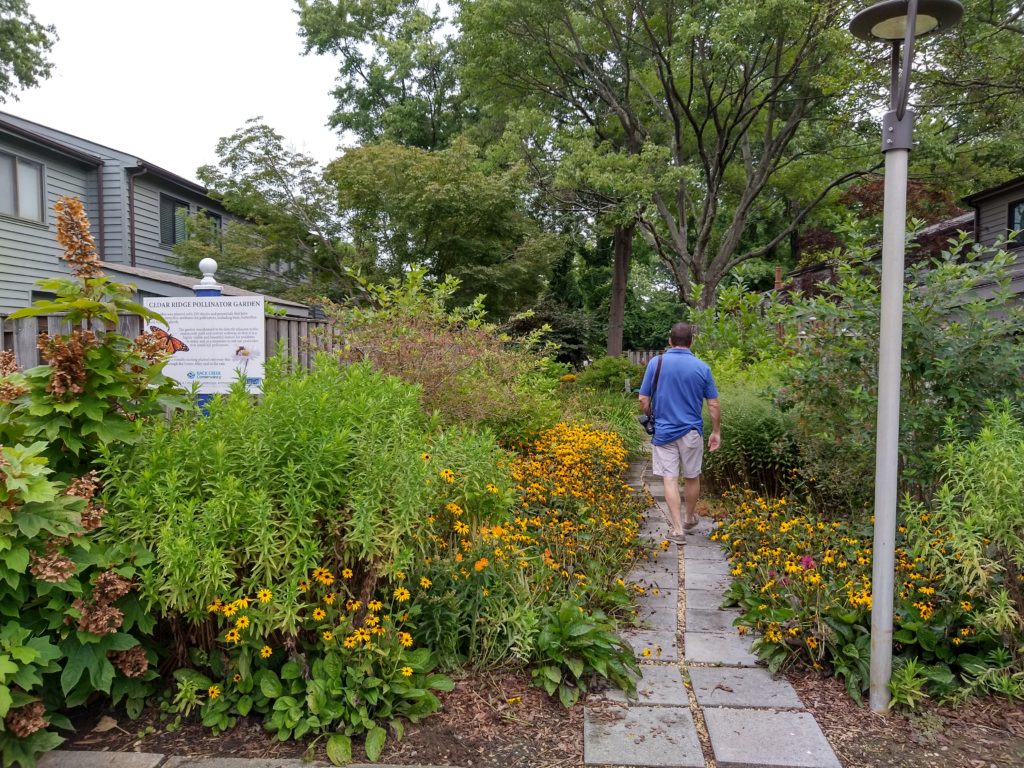 As we walked through, I had fun investigating the plant palette and asking Vernon to identify anything I didn’t know. Most of the plants he named, but there were also some new denizens that weren’t in his original plan! Another whimsical element of landscape architecture. I was particularly surprised by the Monarda. They were about eye level with me and I had no idea they got to that height. They’re clearly called ‘beebalm’ for a reason: even though most of the plants had already dropped their bright pink flowers, bees were still lingering near the flowerheads: a perfect little reminder of how special it is to be in a position to make spaces that welcome not just humans, but other wildlife, to enjoy them.
As we walked through, I had fun investigating the plant palette and asking Vernon to identify anything I didn’t know. Most of the plants he named, but there were also some new denizens that weren’t in his original plan! Another whimsical element of landscape architecture. I was particularly surprised by the Monarda. They were about eye level with me and I had no idea they got to that height. They’re clearly called ‘beebalm’ for a reason: even though most of the plants had already dropped their bright pink flowers, bees were still lingering near the flowerheads: a perfect little reminder of how special it is to be in a position to make spaces that welcome not just humans, but other wildlife, to enjoy them.
—Written by Neha Srinivasan, Nature Sacred’s Sacred Place Project Manager
